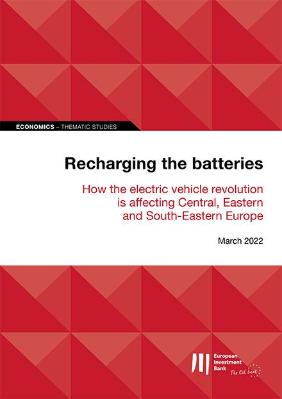
Part of the series :
Description
After spending 120 years producing petrol and diesel engines, the automotive sector is on the cusp of a new and entirely electric age, at least in Europe. The combined effect of new regulations and the plans of original equipment manufacturers (OEMs) suggest that the era of internal combustion engine vehicle powertrains — including plug-in and hybrid models — will be over on the continent by 2035.
Central, Eastern and South-Eastern European (CESEE) countries — largely dependent on the choices taken at the headquarters of the main automotive players — are set to be an integral part of the electrification trend in the European automotive industry and some are even projected to become electrification hubs in the future, but many challenges remain. The report analyses the role of the automotive industry in CESEE and investigates how prepared is the region for the largest structural change in the history of “the machine that changed the world”.
All publications in this series
- How bad is the Ukraine war for the European recovery?
- Unlocking digital connectivity in Africa
- A partnership with Africa
- Artificial intelligence, blockchain and the future of Europe
- Artificial intelligence, blockchain and the future of Europe - Executive Summary
- Rural connectivity toolkit
- The digitalisation of small and medium-sized enterprises in Italy: Models for financing digital projects - Summary Report
- The rise of Africa’s digital economy
- Accelerating the 5G transition in Europe
- Accelerating the 5G transition in Europe - Executive summary
- The EIB COVID-19 Economic Vulnerability Index - An analysis of countries outside the European Union
- From starting to scaling
- Three foundations: A competitive, sustainable, inclusive Europe
- Feeding future generations: How finance can boost innovation in agri-food
- Feeding future generations: How finance can boost innovation in agri-food - Executive summary
- Smart Cities, Smart Investment in Central, Eastern and South-Eastern Europe
- Investing in Europe’s future: the role of education and skills
- Inequality in Europe
- Migration and the EU: Challenges, opportunities, the role of EIB
- Restoring EU competitiveness
- Unlocking lending in Europe
- ECON Note - PPPs and their financing in Europe
- ECON Note - The impact of the recession in 2008-2009 on EU regional convergence
- ECON Note n°02-2012 - EIB Priorities Studies
- ECON Note n°01-2012 - EIB Priorities Studies
- Economic and Financial Reports Volume 01/2010
- Economic and Financial Reports Volume 05/2010
- Economic and Financial Reports Volume 04/2010
- Innovation and productivity growth in the EU services sector
- Economic and Financial Reports Volume 02/2010
- Economic and Financial Reports Volume 03/2010
- Economic and Financial Reports Volume 01/2009
- Economic and Financial Reports Volume 01/2008
- Economic and Financial Reports Volume 01/2007
- Economic and Financial Reports Volume 02/2007
- Economic and Financial Reports Volume 03/2007
- Economic and Financial Reports Volume 03/2006
- Economic and Financial Reports Volume 02/2006
- Economic and Financial Reports Volume 01/2006
- Economic and Financial Reports Volume 03/2005
- Economic and Financial Reports Volume 02/2005
- Economic and Financial Reports Volume 01/2005
- Economic and Financial Reports Volume 02/2004
- Economic and Financial Reports Volume 01/2004
- Economic and Financial Reports Volume 02/2003
- Economic and Financial Reports Volume 01/2003
- Economic and Financial Reports Volume 02/2002
- Economic and Financial Reports Volume 01/2002
- Economic and Financial Reports Volume 03/2001
- Economic and Financial Reports Volume 02/2001
- Economic and Financial Reports Volume 01/2001
- Economic and Financial Reports Volume 02/2000
- Economic and Financial Reports Volume 01/2000
- Economic and Financial Reports Volume 02/1999
- Economic and Financial Reports Volume 01/1999


